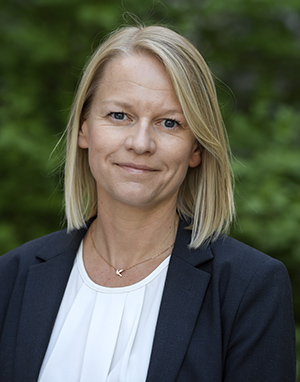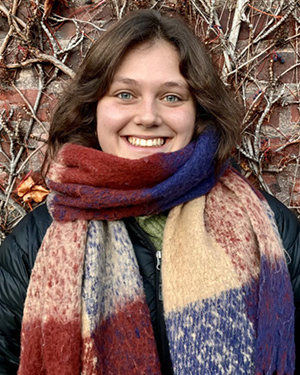Female enrollment in master’s programmes hits all-time high

Theme: Tech for whom?
Enrollment figures for 2025 show the KTH master’s programme has increased female enrollment by 10 percentage points over the last seven years, while becoming even more attractive in terms of the numbers of qualified applicants.
“Given the numbers of qualified students, KTH is in higher demand – it’s more competitive to get in,” says Åsa Andersson, who leads the university international student recruitment team in the Education Office.

Qualified master’s applications soared to a record-high 14,168 – a 10 percent increase over the previous year – while slightly fewer students, 3,408 to be exact, were admitted to KTH.
At the same time, women this year account for 41 percent of the new master’s students enrolled for the 2025/2026.
While not consistent across programmes, the overall 10 percent increase in female enrollment represents a positive direction, Anderssson says. Female enrollment has ranged between 32 and 41 percent since 2019.
“If you look at the schools and programmes, there are increases and decreases, but if you look at the total there has been distinct growth for a number of years,” she says.
Equity and inclusion are now central to EU higher education policy, and Sweden is among many countries that have introduced supportive measures. However, progress in Europe is incremental. According to EU statistics, women comprise 58 percent of students in master’s programmes across Europe, but they represent only 34 percent of master’s students in engineering, manufacturing and construction programmes, and merely 26 percent of those in ICT programmes.
In the U.S. women make up roughly 29 percent of students in graduate-level engineering programs, according to the U.S. National Center for Education Statistics.
A mix of gender ratios
Certain schools and master’s programmes at KTH have for some time attracted a higher female-to-male ratio. In Medical Engineering , for example, the ratio has been generally even for some time, though women have represented a slightly larger portion of the enrollment since 2023.
Women have outnumbered men for at least the last six years in Architectural programme and Sustainable Urban Planning . In Interactive Media Technology , as well as Molecular Techniques in Life Science , female students have been in the majority since 2020, and their numbers have steadily increased to 62 and 65 percent respectively.
However, the numbers of international master’s students have more recently broken in favor of women in many programmes where male students have dominated. For example, in Cybersecurity over the last three years the percentage of women climbed from 17 to 38 percent. The Industrial Management programme records female enrollment of 48 percent – in contrast with only 17 percent three years earlier.
Women represent 44 percent of the 291 students from Sweden who enrolled in KTH master’s programmes. In KTH first cycle programmes, which are dominated by national students, the 33/67 female-to-male split has remained relatively unchanged over the last 10 years with little movement over time.
Other countries reflect a mix of international student enrollment. Women represent 40 percent of the 305 students who come to KTH from Chinese universities. While male students roughly double female students from universities in Germany, India, Canada and Italy.

On the other hand, women dominate the more modest influx of students coming from universities in Spain, Iran, Poland, Mexico and Greece.
A more even split is seen in the combined 117 students that come from universities in Netherlands (51 percent women) and the U.S. (46 percent women).
No single factor
Andersson sees no single factor behind KTH’s growing diversity. Instead, it reflects the university’s commitment to inclusivity, she says. Diversity messaging is embedded throughout international recruitment activities. These efforts include running digital campaigns aimed at women and engaging international student ambassadors—many of them women—to provide personalised outreach to prospective students.
The university also works in tandem with the Swedish Institute and Study in Sweden, a national programme aimed at recruiting international students. Andersson says it helps being aligned with the Sweden brand on the questions of equity and diversity.
Gender equity wasn’t a driving factor when Madeleine Nightengale-Luhan chose KTH to study Electromagnetics, Fusion, and Space Engineering. The second-year student says however that after visiting other northern European technical universities she was struck by the number of female students at KTH.
She says being able to study with other women makes a difference, and provides an element of support. “There are sometimes comments and assumptions that you experience when you're a woman in engineering,” she says. “Men can be supportive, but with women it's just different. Men, especially in engineering, tend to want to solve your problems, whereas women are there to listen and to help.”
Nightengale-Luhan says also that KTH also offers encouraging examples of stand-out and successful women. “When I see women who share my interests or have reached top positions, it shows me that women can succeed too. It’s not just men.”
David Callahan
